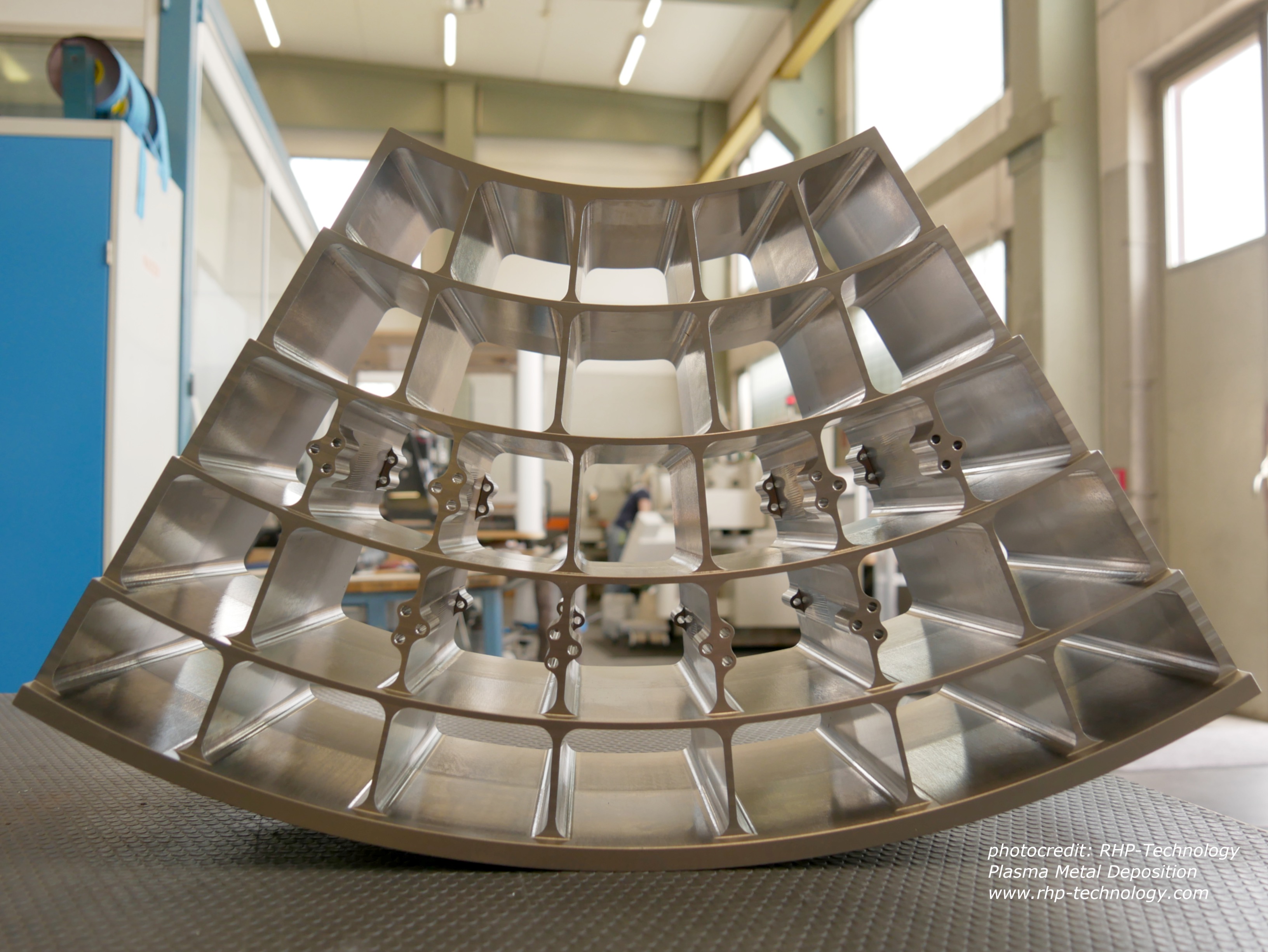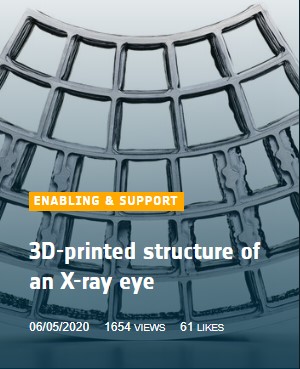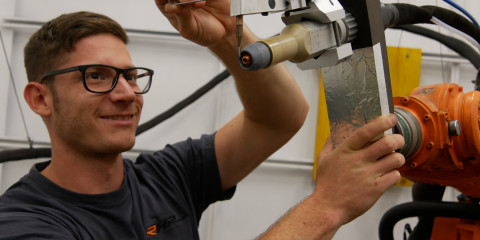This is a prototype 3D-printed and partly machined version of what might one day become the ‘eye’ of ESA’s Athena X-ray telescope.
An ESA-led project 3D produced this test structure to evaluate a promising method called plasma metal deposition.
A hot plasma plume renders metal into molten drops, to be laid down as needed. A total of six test parts were produced using this method, undertaken by RHP Technology GmbH in Austria, working with AAC Aerospace and Advanced Composites and FOTEC Forschungs- und Technologietransfer GmbH."
The goal of this project was to assess the ability of the technique for the manufacturing of space hardware and components with size larger than 0.5 m,” explains ESA materials engineer Laurent Pambaguian. “We investigated the entire process chain, including follow-up heat treatment and post-processing machining as well as 3D printing, using titanium alloy as either metal particles or wire feedstock.“ The result demonstrates good mechanical properties and finishing, meaning we are able to take the technology forward, including the investigation of alternative materials. Plasma metal deposition is a candidate method to manufacture large sized components in the future, such as the optical bench of the Athena mission, which will be the most complex part ever printed in titanium.”
Due to launch in 2031, ESA’s Athena mission will probe 10 to 100 times deeper into the cosmos than previous X-ray missions, to observe the very hottest, high-energy celestial objects.
This mission requires entirely new X-ray optics technology, with stacks of ‘mirror modules’ arranged carefully to capture and focus high-energy X-rays.

The optic bench aligns and secures around 750 mirror modules in a complex structure with many deep pockets that tapers out to a maximum height of 30 cm. Its overall shape needs to be precise down to a scale of a few tens of micrometres – or thousandths of a centimetre.
This project has been supported through ESA’s Technology Development Element as part of the Agency’s Advanced Manufacturing initiative, harnessing novel materials and processes for the space sector.







